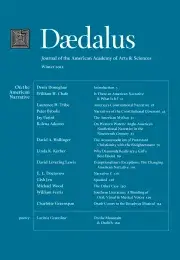Why Diamonds Really are a Girl’s Best Friend
The old law of domestic relations and the system known as coverture have shaped marriage practices in the United States and have limited women’s membership in the constitutional community. This system of law predates the Revolution, but it lingers in U.S. legal tradition even today. After describing coverture and the old law of domestic relations, this essay considers how the received narrative of women’s place in U.S. history often obscures the story of women’s and men’s efforts to overthrow this oppressive regime, and also the story of the continuing efforts of men and some women to stabilize and protect it. The essay also questions the paradoxes built into American law: for example, how do we reconcile the strictures of coverture with the founders’ care in defining rights-holders as “persons” rather than “men”? Citing a number of court cases from the early days of the republic to the present, the essay describes the 1960s and 1970s shift in legal interpretation of women’s rights and obligations. However, recent developments – in abortion laws, for example – invite inquiry as to how full the change is that we have accomplished. The history of coverture and the way it affects legal, political, and cultural practice today is another American narrative that needs to be better understood.
In the usual telling, women enter the narrative of U.S. history when they are executed: for witchcraft in Salem, for complicity in Lincoln’s assassination, for treason in 1953. They appear when they have been helpful to famous men: Pocahontas, Sacagawea, presidents’ wives. The general outlines of the history of women’s experience in the United States are easily caricatured and superficially summarized.
Many folks know that Abigail Adams told John Adams to “remember the ladies.” Then there’s a gap of some seventy years. Not until after the Seneca Falls Convention of 1848 and the drafting of the Declaration of Sentiments, claiming for women the right to vote, do we encounter other familiar names like Elizabeth Cady Stanton and Susan B. Anthony. Abolitionists Sojourner Truth and Harriet Tubman, as well as the enslaved women who claimed freedom during the Civil War and struggled to make it meaningful during Reconstruction, also figure prominently in the mid-nineteenth-century narrative. . . .
